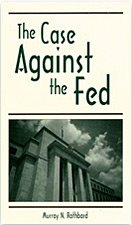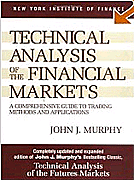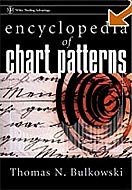From RBC Capital Markets' report and outlook on gold
"The numbers in the markets indicate that gold exchange traded funds (ETFs), along with gold royalty companies such as Franco-Nevada, have outperformed practically all listed gold - and other resources - stocks over the past two months, a time when global resources stocks have been mercilessly hammered. Gold ETFs, representing a proxy investment in gold bullion itself, have been outperformed over the period by silver ETFs, which traditionally display a higher "beta" than gold bullion prices during times of crisis or stress, currently seen in global investment markets.
Specialist analysts at RBC Capital Markets have sought to look forward, and in a report out to clients this week, recommend that it's time to buy listed gold stocks, not least on seasonal factors. RBCCM analysts argue that the macro outlook remains constructive, on a combination of a US dollar "that shows no clear leadership as a global reserve currency", and, second, that "central banks continuing to aggressively reflate the economy will likely maintain pressure on currencies relative to gold and other hard assets. This backdrop is complemented by emerging market countries that are facing energy and agriculture inflation which is expected to be positive for gold". RBCCM's analysts see a positive outlook for the back half of 2008: "the seasonal slowdown for physical gold demand is nearly behind us, and we expect increased demand looking ahead to August, September, and October. With the US Federal Reserve rate cycle on hold for the time being, the US dollar drifting and inflation pressures growing around the world, particularly in the emerging market economies, we believe the timing is right for investors to be buying gold and gold equities".
As observed over the past 12 months, the RBCCM analysts anticipate that larger capitalisation listed gold stocks "with established production bases and higher share liquidity" will continue to outperform smaller capitalisation names. From a fundamental perspective, the analysts continue to favour gold companies with improving production and cost profiles, gold reserve upside, active exploration programs and strong management teams.
RBCCM analysts identify several positive factors for gold bullion prices:
RBCCM analysts point also to the ratio of the spot dollar gold price to the Philadelphia Gold & Silver Index (XAU), given that the analysts believe that the ratio is an important indicator for identifying periods when gold stocks are relatively cheap or expensive, compared to gold bullion. The current ratio is around 5.4 times, and has averaged five times over the past few months. According to the RBCCM analysts, when the ratio is above five times, the average one-year holding period return for the XAU has historically been 40%; when the ratio is between 4.5 and 4.75 times, the average return has been 27%.
The RBCCM analysts also note that the net speculative long gold futures position on COMEX has coincided with the run in the price of gold. On 19 February 2008, the net long position in futures reached an all-time high of 25.3m ounces; with the recent selloff in gold, the RBCCM analysts expect a further decline from the 25 July level of 23.7m ounces. The analysts look for the "positive correlation between gold and the speculative futures position to continue, and look for the long position to remain strong as gold consolidates and makes another run at $1,000 an ounce in September-October 2008".
The RBCCM analysts also argue that seasonality provides a compelling argument for investment: "Over the past 28 years, gold has typically outperformed on a monthly basis in the months of April and May. This is usually followed by a seasonal slowdown in the [Northern Hemisphere] summer months, and an upsurge in the early fall. With this in mind, investors may be able to exploit near-term weakness in gold and gold equities before a positive run in the late summer, early fall period".
Finally, the analysts note that over the past couple of years, ETF gold products "have emerged as a meaningful component of gold demand, accounting for 7% of total demand in 2007. Following a slowdown in mid-2007, the five primary ETFs have added almost nine million ounces, coincident with the gold price rally". During the recent rally in the gold price from its low of around $850 an ounce in early May to around the $970 an ounce level in early July, ETF ounces under management bounced back from 25.9m to a record 29.8m ounces (and are currently 28.8m as of July 25). This overhauls the previous all time high set in March when gold bullion hit its record of $1,033 an ounce. "We believe", conclude the analyst, "that investors continue to use this product not only for short-term trading opportunities but also for long-term or strategic investment purposes".
Specialist analysts at RBC Capital Markets have sought to look forward, and in a report out to clients this week, recommend that it's time to buy listed gold stocks, not least on seasonal factors. RBCCM analysts argue that the macro outlook remains constructive, on a combination of a US dollar "that shows no clear leadership as a global reserve currency", and, second, that "central banks continuing to aggressively reflate the economy will likely maintain pressure on currencies relative to gold and other hard assets. This backdrop is complemented by emerging market countries that are facing energy and agriculture inflation which is expected to be positive for gold". RBCCM's analysts see a positive outlook for the back half of 2008: "the seasonal slowdown for physical gold demand is nearly behind us, and we expect increased demand looking ahead to August, September, and October. With the US Federal Reserve rate cycle on hold for the time being, the US dollar drifting and inflation pressures growing around the world, particularly in the emerging market economies, we believe the timing is right for investors to be buying gold and gold equities".
As observed over the past 12 months, the RBCCM analysts anticipate that larger capitalisation listed gold stocks "with established production bases and higher share liquidity" will continue to outperform smaller capitalisation names. From a fundamental perspective, the analysts continue to favour gold companies with improving production and cost profiles, gold reserve upside, active exploration programs and strong management teams.
RBCCM analysts identify several positive factors for gold bullion prices:
- Non-European Central Bank announcements regarding gold purchases (Russia, UAE, Qatar)
- Chinese foreign exchange reserves topping $1.4 trillion, dominated by holdings of US treasury securities. The Chinese central bank continues to comment on the need to diversify foreign exchange reserves
- Firm demand for gold ETFs, near an all-time high of 29.8m ounces
- Gold equities pricing in gold bullion at $850-$875/oz long-term
- Expectations of a US Federal Reserve rate pause, and no rate hike expected, and
- Mine supply flat in 2008, with a decline expected in 2010.
- Potentially negative factors affecting gold bullion prices are identified as:
- Jewellery demand showing strong elasticity in India and the Far East
- Switzerland deciding to sell 200 tonnes over two years, replacing Germany in the ECB gold sales agreement, and
- The potential for IMF gold sales as part of the ECB gold sales agreement.
RBCCM analysts point also to the ratio of the spot dollar gold price to the Philadelphia Gold & Silver Index (XAU), given that the analysts believe that the ratio is an important indicator for identifying periods when gold stocks are relatively cheap or expensive, compared to gold bullion. The current ratio is around 5.4 times, and has averaged five times over the past few months. According to the RBCCM analysts, when the ratio is above five times, the average one-year holding period return for the XAU has historically been 40%; when the ratio is between 4.5 and 4.75 times, the average return has been 27%.
The RBCCM analysts also note that the net speculative long gold futures position on COMEX has coincided with the run in the price of gold. On 19 February 2008, the net long position in futures reached an all-time high of 25.3m ounces; with the recent selloff in gold, the RBCCM analysts expect a further decline from the 25 July level of 23.7m ounces. The analysts look for the "positive correlation between gold and the speculative futures position to continue, and look for the long position to remain strong as gold consolidates and makes another run at $1,000 an ounce in September-October 2008".
The RBCCM analysts also argue that seasonality provides a compelling argument for investment: "Over the past 28 years, gold has typically outperformed on a monthly basis in the months of April and May. This is usually followed by a seasonal slowdown in the [Northern Hemisphere] summer months, and an upsurge in the early fall. With this in mind, investors may be able to exploit near-term weakness in gold and gold equities before a positive run in the late summer, early fall period".
Finally, the analysts note that over the past couple of years, ETF gold products "have emerged as a meaningful component of gold demand, accounting for 7% of total demand in 2007. Following a slowdown in mid-2007, the five primary ETFs have added almost nine million ounces, coincident with the gold price rally". During the recent rally in the gold price from its low of around $850 an ounce in early May to around the $970 an ounce level in early July, ETF ounces under management bounced back from 25.9m to a record 29.8m ounces (and are currently 28.8m as of July 25). This overhauls the previous all time high set in March when gold bullion hit its record of $1,033 an ounce. "We believe", conclude the analyst, "that investors continue to use this product not only for short-term trading opportunities but also for long-term or strategic investment purposes".
Labels: gold, markets, mining stocks















![[Most Recent Quotes from www.kitco.com] [Most Recent Quotes from www.kitco.com]](http://www.kitco.com/images/live/t24_au_en_usoz_6.gif)
![[Most Recent Quotes from www.kitco.com] [Most Recent Quotes from www.kitco.com]](http://www.kitco.com/images/live/au_go_0030_ny.gif)
![[Most Recent Quotes from www.kitco.com] [Most Recent Quotes from www.kitco.com]](http://www.kitco.com/images/live/au_go_0365_ny.gif)
![[Most Recent Quotes from www.kitco.com] [Most Recent Quotes from www.kitco.com]](http://kitconet.com/charts/metals/silver/t24_ag_en_usoz_4.gif)

















0 ΣΧΟΛΙΑ (COMMENTS):
Post a Comment
<< Home